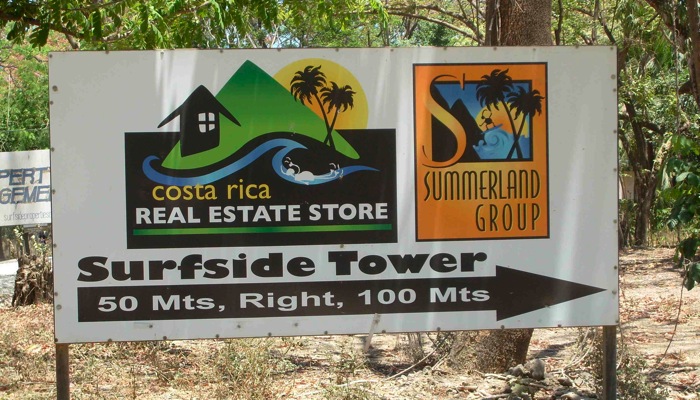
Addresses
Living without a car, we sometimes need to call a taxi. This is the address we give: We live in Potrero. From Super Surfside (“super” is a small supermarket), go 100 meters north, 50 meters east, and 100 meters south. It’s the apartment building with the blue dome. Costa Rica doesn’t have house numbers or signs with street names so landmarks, distance in meters, and compass directions are what’s used. The landmarks tend to be businesses, schools, parks, and sometimes, places that were once important but no longer exist. Our first house in San José was: del antiguo Restaurante Rancho Luna... (from the old restaurant—old meaning it no longer exists because a fire burned it down). Another landmark people in San José use is: del antiguo higuerón... (from where the large fig tree used to be...) Everyone here takes that direction-giving technique (direcciones a la tica) for granted but international delivery companies, such as DHL, complain that it takes too long to sort packages. Ambulances, too, sometimes lose 15 minutes finding the correct landmark, especially if it no longer exists. About three years ago, the Costa Rican government declared that addresses will now officially include the avenue, street, and number; for instance, Avenida 12 Calle 50 #51 (the last digit is the number of meters from the intersection of the two streets). However, most streets outside the capital don’t have names or numbers. Thousands of street signs would have to be installed and a massive campaign would need to take place to educate the public. Officials estimate it’ll take between ten to fifteen years to adopt the new system. I think that two generations is more realistic. Using landmarks to give directions is very much ingrained not only in the culture but the brains of the ticos. I, for one, still navigate through this world guided by real objects in the environment, not by signage. When we moved to Denver, Colorado, I quickly learned how to drive to our house but suddenly, around November, I kept missing the street. “Why do you keep turning left too late?” my kids asked. “Because the tree on the corner of the street where I’m supposed to turn lost its leaves so I don’t recognize it anymore” was my reply. The street may have a sign that says “Race St” but for my brain, whose synapses for visual mapping were developed while I lived in Costa Rica, the street is “the one with the willow tree.”
Friday, March 6, 2009